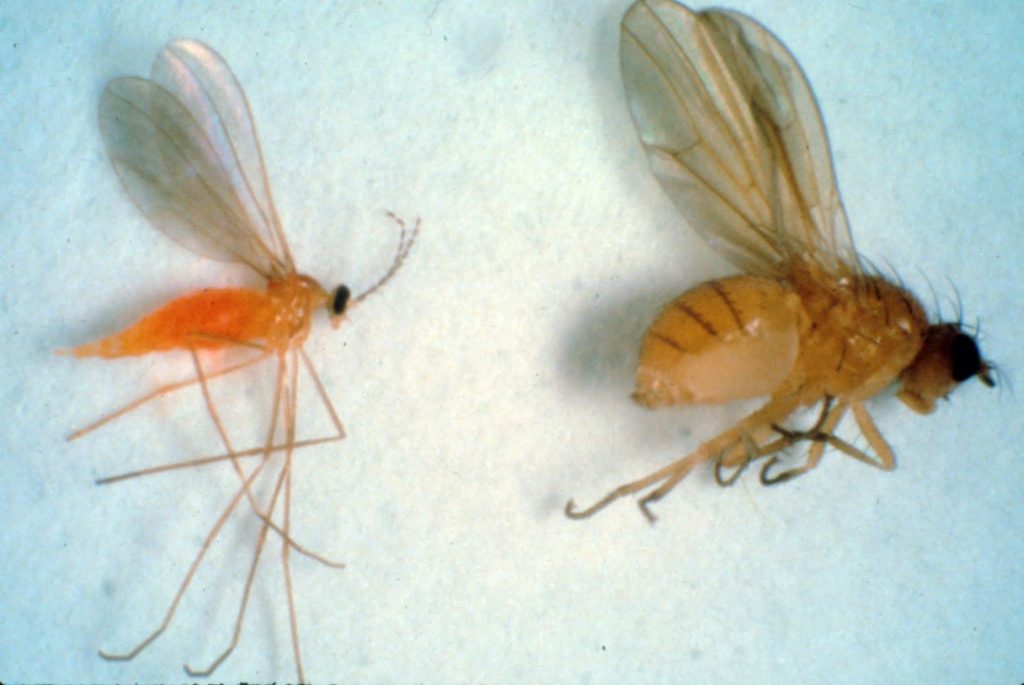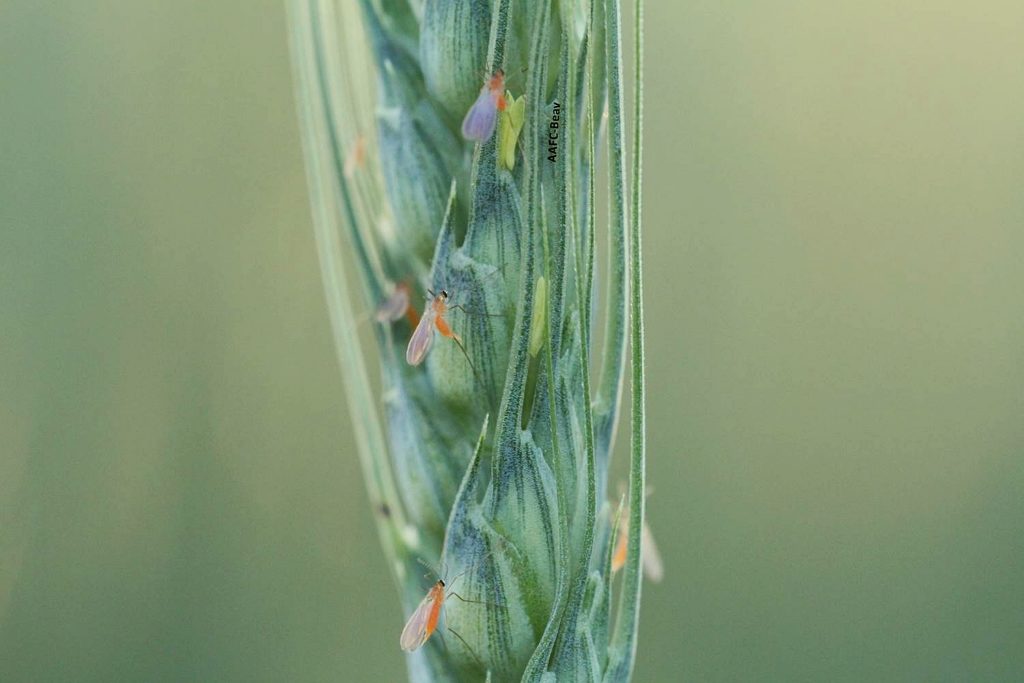The case of the innocuous versus the evil twin: When making pest management decisions, be sure that the suspect is actually a pest. This can be challenge since insects often mimic each other or look very similar. An insect that looks, moves and acts like a pest may in fact be a look-alike or doppelganger.
Doppelgangers may be related (e.g. same genus) or may not be related, as in the case of monarch butterflies (Danaus plexippus) and viceroys (Limenitis achrippus). Doppelgangers are usually relatively harmless but sometimes the doppelganger is a pest yet their behaviour, lifecycle or hosts may be different.
Correctly identifying a pest enables selection of the most accurate scouting or monitoring protocol. Identification and monitoring enables the application of economic thresholds. It also enables a producer to select and apply the most effective control option(s) including method and timing of application. For the rest of the growing season, the Insect of the Week will feature insect crop pests and their doppelgangers.
The case of the wheat midge vs. Lauxanid fly:Wheat midge larvae, in high enough numbers, can significantly reduce yield and quality of a wheat crop. The time to control this pest is at the adult stage. The key to determining whether adult numbers exceed the economic threshold for control is to follow the recommended insect pest monitoring protocol.
One hiccup is that it can be easy to mistake lauxanid flies for wheat midge adults when doing in-field scouting. But their size, general body shape and colour differences will help enable a person to tell them apart.
Wheat midge:
- Thinner “mosquito-like” body (Image 1, left)
- Long, thin legs
- Between 1.5- 2 mm long
- Dark, vibrant orange when alive
- Large, black eyes that proportionally make up approximately 9/10’s of head
Lauxanid fly:
- Bulkier body (Image 1, right)
- Shorter, compact legs
- Between 2 and 4 mm long
- Paler, less vibrant orange colour
- Smaller eyes that may be black, brown or red. Eyes proportionally make up approximately ½ of head

Photo Credit: Bob Elliott (ret.), AAFC
Wheat midge larvae (Image 2) will feed on developing wheat kernels and can be found inside the wheat head. Lauxaniid larvae are not recorded as pests of any field crop and tend to be found in decaying leaf litter. Wheat midge larvae can be identified by their bright orange colour, and presence of spatula structure (Fig. 2; y-shaped structure circled below).

Photo credit: AAFC-Jorgensen

Photo credit: AAFC-Dufton
More information on wheat midge, other crop pests and their natural enemies, is available by accessing the updated Field Crop and Forage Pests and their Natural enemies in Western Canada field guide. Also refer to https://MidgeTolerantWheat.ca for the latest information on fighting wheat midge using tolerant wheat varieties.
Review previously featured insects by visiting the Insect of the Week page.
Post contributed by Amanda Jorgensen.
